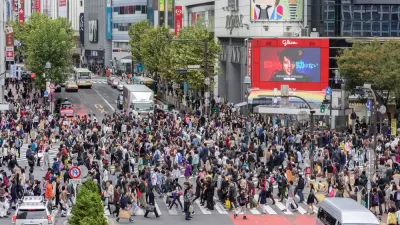With the rise of globalization, and urbanization, people are rethinking how cities should be structured in terms of transportation and mobility. Is it possible to reconfigure auto-centric cities into pedestrian-friendly spaces?

Towards a walking world
An interdisciplinary research team at Arup has spent the last six months exploring this question. The resulting publication, Cities Alive: Towards a Walking World, looks at 80 case studies around the world, identifying 50 benefits of increasing the walkability of cities and 40 actions that could be taken right now to help us reach this goal.
Perhaps most importantly, it describes 50 “drivers of change” — reasons that making cities more walkable should and could happen today. “There are the demographic factors, such as aging populations and shrinking families, leading to an increasing need for social experience to avoid isolation and social exclusion,” said Demetrio Scopelliti, an architect at Arup’s Milan office and the project’s lead researcher.
FULL STORY: Walkability reaches a tipping point

Alabama: Trump Terminates Settlements for Black Communities Harmed By Raw Sewage
Trump deemed the landmark civil rights agreement “illegal DEI and environmental justice policy.”

Study: Maui’s Plan to Convert Vacation Rentals to Long-Term Housing Could Cause Nearly $1 Billion Economic Loss
The plan would reduce visitor accommodation by 25% resulting in 1,900 jobs lost.

Why Should We Subsidize Public Transportation?
Many public transit agencies face financial stress due to rising costs, declining fare revenue, and declining subsidies. Transit advocates must provide a strong business case for increasing public transit funding.

Paris Bike Boom Leads to Steep Drop in Air Pollution
The French city’s air quality has improved dramatically in the past 20 years, coinciding with a growth in cycling.

Why Housing Costs More to Build in California Than in Texas
Hard costs like labor and materials combined with ‘soft’ costs such as permitting make building in the San Francisco Bay Area almost three times as costly as in Texas cities.

San Diego County Sees a Rise in Urban Coyotes
San Diego County experiences a rise in urban coyotes, as sightings become prevalent throughout its urban neighbourhoods and surrounding areas.
Urban Design for Planners 1: Software Tools
This six-course series explores essential urban design concepts using open source software and equips planners with the tools they need to participate fully in the urban design process.
Planning for Universal Design
Learn the tools for implementing Universal Design in planning regulations.
Smith Gee Studio
Alamo Area Metropolitan Planning Organization
City of Santa Clarita
Institute for Housing and Urban Development Studies (IHS)
City of Grandview
Harvard GSD Executive Education
Toledo-Lucas County Plan Commissions
Salt Lake City
NYU Wagner Graduate School of Public Service





























